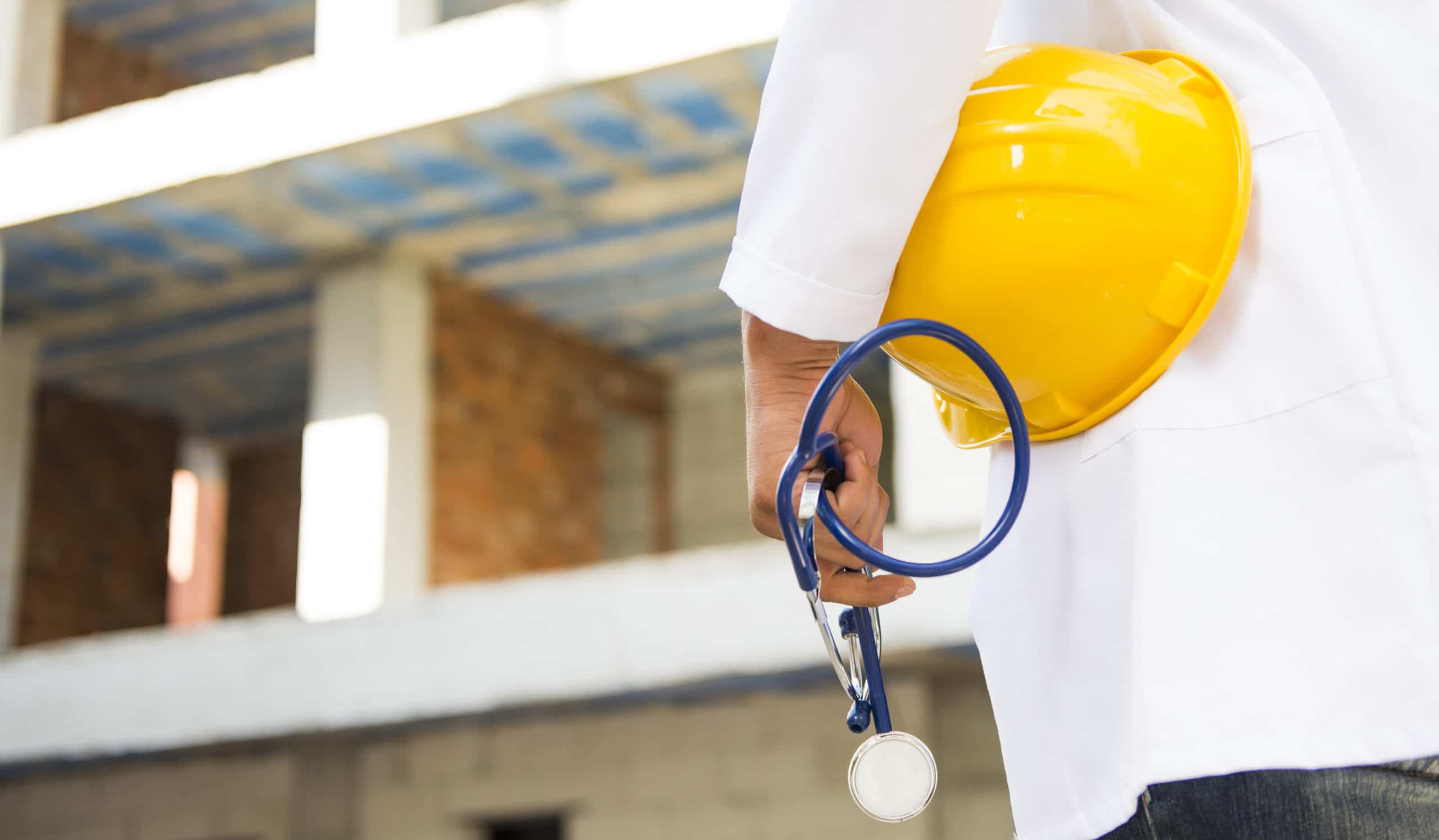Traditionally, a contracted medical provider primarily runs clinic operations on project sites—a reactive capability focused on early management of illness, emergency response, and some involvement in ongoing health planning and training—but medical providers can also be leveraged to proactively drive HSE initiatives.
Medical providers with adequate training and experience in health, safety, and environment (HSE) topics can play a key role in proactive HSE management. In-depth understanding of medical treatment, occupational injuries, OSHA regulations, and the relationship shared by patients and providers adds significantly to the effectiveness of HSE strategies, and can increase buy-in and compliance from employees.
HSE cross-trained medical providers can especially excel at assisting with these four health, safety, and environment functions:
1. Risk Assessment
Risk assessments are an essential element of every HSE strategy. While HSE advisors and managers are trained to spot hazards to employees, a medical provider can add insight into what specific injuries employees could sustain. Involving contracted medical providers in your process for risk assessments allows them to point out hazards that can lead to minor or major injuries, based on their experience.
When risks have been identified, medical providers can help devise solutions to reduce the chance of  bodily harm to employees, and provide medical verification that these solutions significantly reduce risks.
2. Personal Protective Equipment (PPE) Selection
Personal protective equipment is the first line of defense between employees and hazards, and helps mitigate the risk of an employee getting injured. However, determining the best PPE to use for different hazards can be challenging. That’s where medical providers can be helpful.
Because HSE cross-trained medical providers often treat common workplace injuries, and are aware of their causes, they can be a wealth of knowledge when it comes to choosing appropriate PPEs for a given worksite. Taking into consideration what physical threats a hazard poses, as well as human physiology, medical providers can recommend PPEs with the best protection for the work at hand.
3. Emergency Response Planning
Emergency response planning can be a daunting task, with OSHA requiring plans that include how to report an emergency, evacuation procedures and assembly points, procedures to shut down project operations, rescue and medical duties for any workers assigned to perform them, and contact information for individuals with more information.
OSHA also recommends including contact information for emergency responders, arranging drills for responders and employees, and designating staff responsible to inventory and maintain emergency equipment and supplies. Medical providers can help gather emergency contact information, train staff on the proper procedures for getting medical help during an emergency, and maintain medical supplies necessary for an on-site accident.
Learn more about our Medical Emergency Response Planning services.
4. Incident Investigation
When an incident that results in death, physical injury, occupational disease, or even dangerous occurrences does occur on a worksite, an HSE investigation must follow. Injury and treatment information is a key part of every investigation, including: what injuries were sustained, how they were sustained, how they were treated, and how they recovered.
Medical providers are an essential resource for injury information, and providers that are HSE cross-trained know what kind of information is needed, and how it should be formatted. They’re one of the first points of contact after an employee gets injured, learning critical information about the injury and how it occurred. They also track and document treatment and the healing process, notating vital data for investigations.
There are many key considerations for implementing an HSE cross-trained medical provider program. The most important tool is a clear roadmap and calendar for implementation, complete with documented accountabilities.
At Remote Medical International, our medical staff work extensively with clients on the front end to define their roadmap and increase the effectiveness of company programs. After task ownership is clear, key performance indicators and reporting requirements are also documented, which allows both of us to assess effectiveness and make data-driven improvements. This process is critical because it generates buy-in from executives and management teams here and at the client’s company.
Areas with smaller populations constitute a relatively low risk operation where the medical provider can serve in a dual role as the primary HSE advisor onsite reporting to an HSE manager. In larger projects, this strategy can be implemented at satellite sites where there is not a requirement for full-time medical services. Here, an advanced provider is needed based on risk assessment results or hazard analysis. Â Either way, the medical care provider is a key extension to the HSE advisor or HSE manager.
While this model certainly doesn’t replace HSE management at a high level, it does work remarkably well for small to mid-size project sites or companies that are growing rapidly and contracting HSE managers for individual projects. Creating dual roles for medical care providers allows for more value at a lower expense than the alternative of hiring both individuals separately. This shared ownership in planning, policy, and measurement can increase the effectiveness of your HSE initiatives.
Sources:
https://www.osha.gov/SLTC/emergencypreparedness/gettingstarted.html


